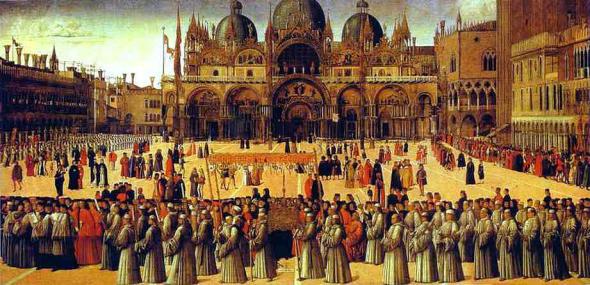From the eighth to the 18th century, one of the most powerful countries in the world wasn’t a country at all. The autonomous city-state of Venice commanded a vast economic and military empire that at its height in the 15th century reached as far east as Cyprus. (The artist El Greco, for instance, wasn’t actually Greek by geography or nationality. He was born on Crete at a time when it was under Venetian rule.)
The Italian city-states of the Middle Ages may be the best-known, but they weren’t alone. During the same period, a number of cities in what is now France, Germany, and the Low Countries were ruled as autonomous political units. So why don’t we have them anymore?
The traditional explanation is that city-states were simply too militarily weak to compete with larger nation-states. But NYU political scientist David Stasavage argues that economic factors are a more likely explanation. His research has found that between 1000 and 1800, the population growth of autonomous cities initially exceeded that of non-independent cities, but the trend reversed itself long before these cities were conquered by their bigger neighbors. In Venice, for instance, the population by 1500 was smaller than it had been in 1330, beginning a long decline until the 18th century, when it was eventually conquered by Napoleon.
Autonomous cities took off in Europe at a time in history when rule of law and political authority were weak. Wealthy merchants in a city would band together both to fund their common security and to enforce property rights when larger governments couldn’t.
“These were islands of economic dynamism at a time when things weren’t necessarily going all that well in the rest of Europe,” Stasavage told Slate.
So what went wrong? Often, these cities evolved political systems that gave wealthy merchants direct control over governance, and they used that power to make life miserable for the competition.
“The big drawback is that once a group of people are running their own affairs, they’re also looking out for their own interests,” he says. “So they start setting up barriers to outsiders coming in and all these restrictions on others engaging in commerce within the city limits.”
As oligarchies closed to outside commerce, the European cities began to slowly decline. Their closest successors today might be autonomous Asian cities like Hong Kong and Singapore, which share their economic dynamism as well as some of their troubling cronyism.
The recent rise of developing-world megacities has also reignited some interest in urban areas as more autonomous political units. Hopefully the Hyderabads and São Paulos of the future can avoid some of the mistakes of the Venices and Colognes of the past.
